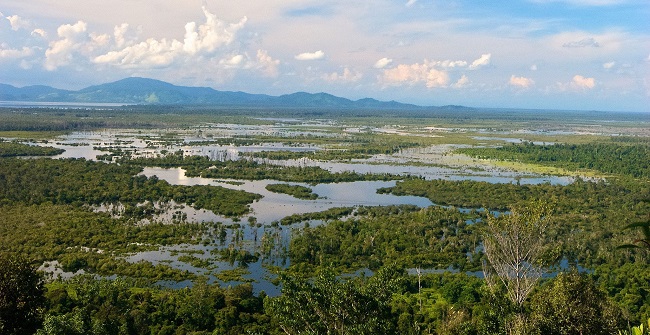Countries have been urged to protect vulnerable wetland ecosystems as part of their climate strategies, and to learn from each other’s experiences to sustainably manage them. Tropical peatlands are one of the main carbon sinks in the planet, but are under threat from activities such as agriculture, infrastructures and mining.

The message is forms the kernel of a research published in a special issue of the Springer journal Mitigation and Adaptation Strategies for Global Change. It presents nine papers from Indonesia, the Congo basin and the Peruvian Amazon, offering new insights to help policy-makers balance development, climate and conservation goals.
Titled: “Tropical peatlands under siege: the need for evidence-based policies and strategies”, the study was led by the Centre for International Forestry Research (CIFOR) in collaboration with the US Forest Service and with USAID’s support.
“Peatlands present us with a golden opportunity to confront climate change, but we need policy-makers and scientists to work hand-in-hand in the creation of sound strategies,” says Centre for International Forestry Research principal scientist, Daniel Murdiyarso, on behalf of the other Guest Editors Erik Lilleskovand Randy Kolka of the US Forest Service.
“It is also vital that countries exchange knowledge to avoid tripping over the same stone twice when it comes to peatland conservation and management,” he adds.
Tropical peatlands in Southeast Asia continue to be converted at an alarming rate – particularly in Indonesia, where peatland development for oil palm and pulpwood took off in the 80’s. Peatlands in the Amazon and Congo Basin are a lot less degraded, but they might follow the same unsustainable pathway if they do not take action, warn researchers.
The document explores how lessons learned from Indonesia can inform policies to protect relatively intact peatlands in Peru and the Republic of Congo, noting that in these three regions alone peat swamp forests cover a total of 50 million hectares and store up to 3,000 tons of carbon per hectare. Scientists emphasize the need for strong policies that protect peatlands from hydrocarbon mining and infrastructure development and call on countries to exchange practical knowledge before it is too late.
The research has other policy implications. For example, the papers identify drivers of conversion and can be used to refine emission factors – essential to quantifying greenhouse gas emissions from the degradation of peatlands. “The data reported in this special issue enriches existing information, including the emission factors in the Wetland Supplement of the IPCC guidelines,” notes the document.
Studies also unravel peatland hydrology – vital to restoring drained ecosystems – and investigate better ways of modeling and remotely monitoring water regimens. All this knowledge could be harnessed by national bodies such as the Indonesian Peatland Restoration Agency, tasked with restoring more than two million hectares of degraded peat swamp forests by 2020.
For authors, a deeper understanding of peatland characteristics is important for countries to deliver on both national priorities and global climate goals. For instance, through evidence-based REDD+ programmes and nationally appropriate mitigation actions (NAMAs).
“Policies that recognise peatlands as a unique and yet vulnerable ecosystem type at the national level, alongside an appropriate valuation of their ability to store carbon over long periods of time, could up their chances of remaining carbon sinks rather than becoming major sources of greenhouse gases,” conclude the authors of the synthesis of the nine papers published in the issue.
